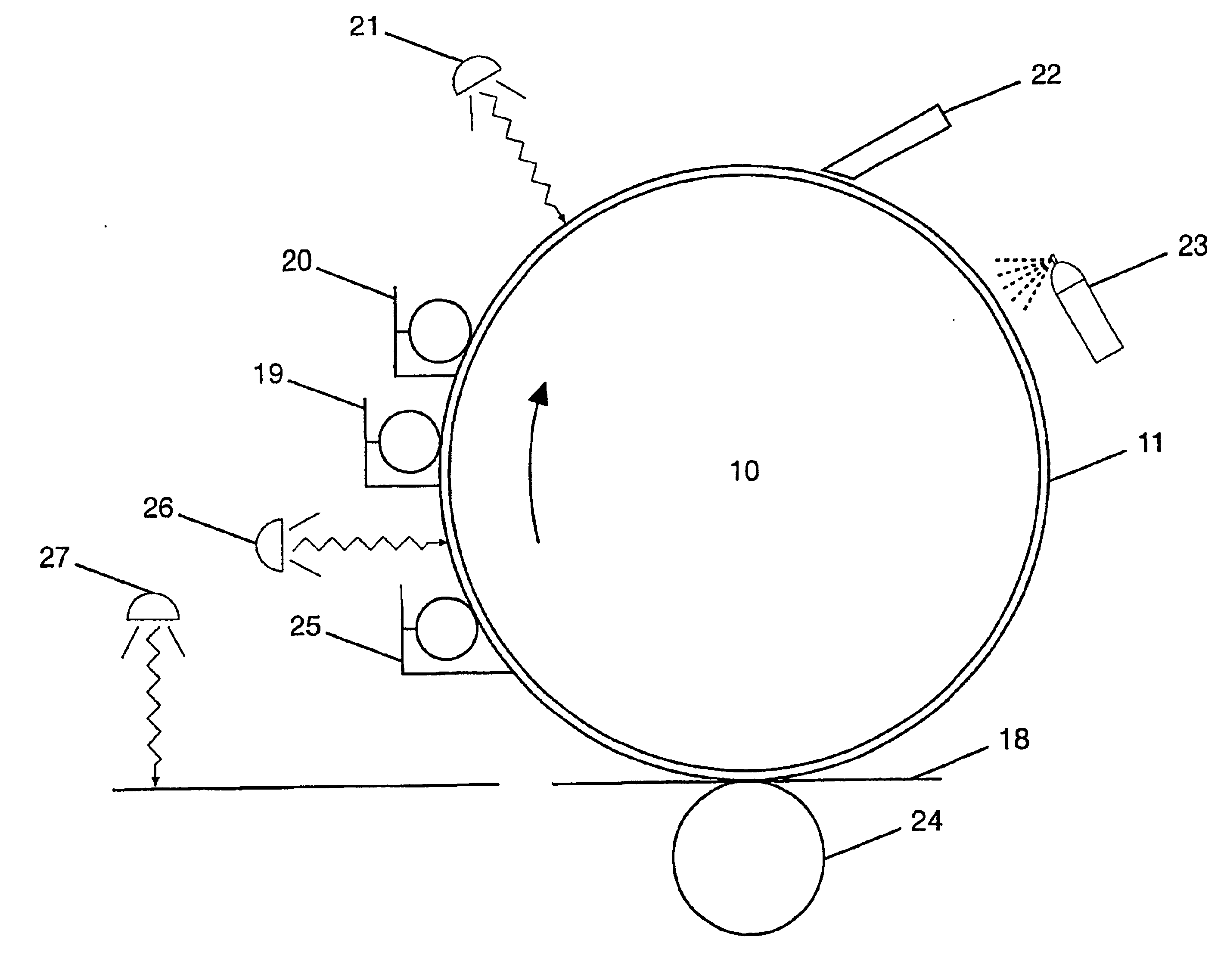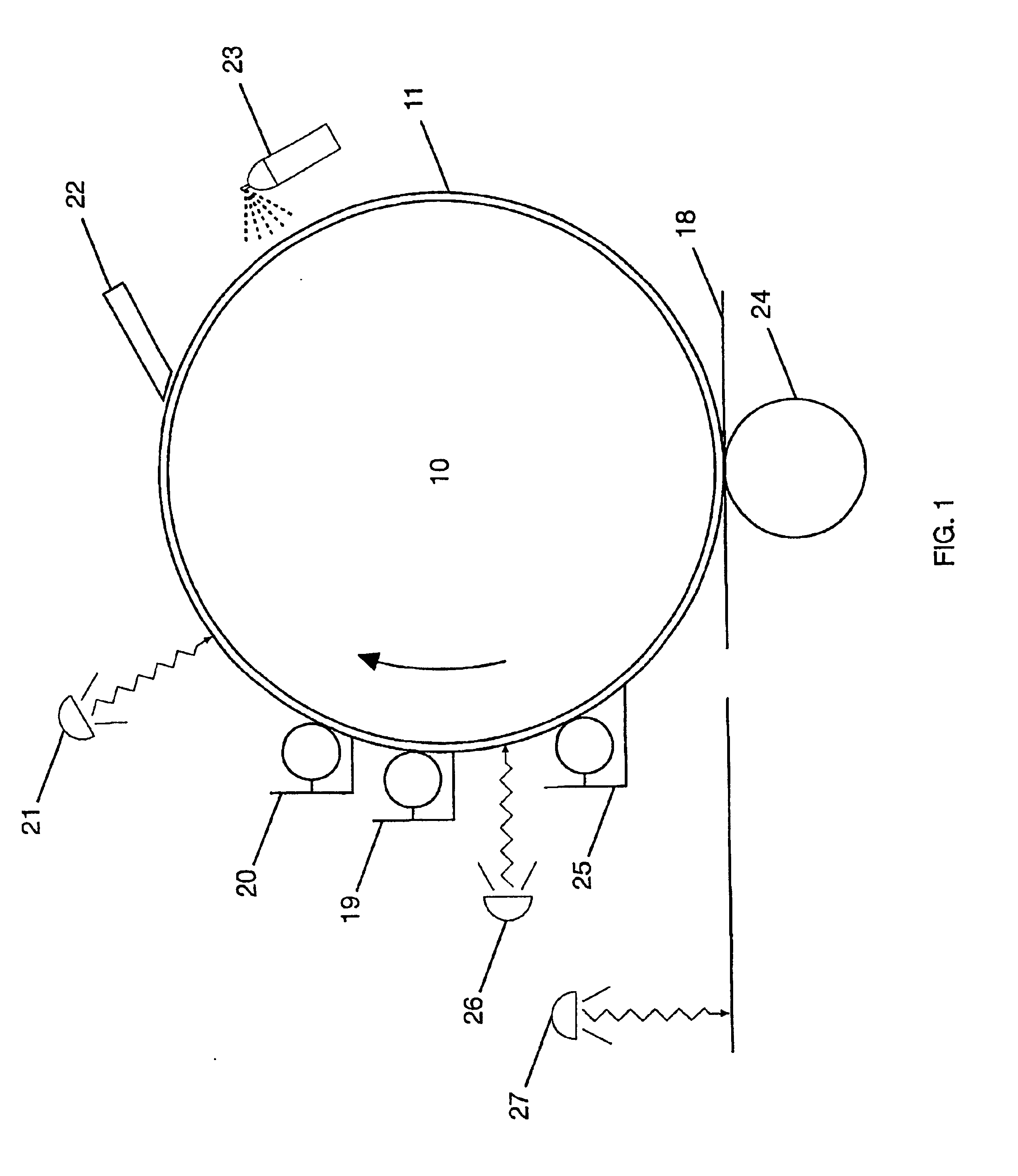Method of printing variable information
a variable information and printing technology, applied in the field of printing variable information, can solve the problems of large technology complexity of xerographic printing, limited process speed, needing to use toner, etc., and relatively expensive production cos
- Summary
- Abstract
- Description
- Claims
- Application Information
AI Technical Summary
Benefits of technology
Problems solved by technology
Method used
Image
Examples
examples
The following descriptions are by way of example to illustrate the method as described.
example i
The following ink was formulated (The formulation is by percentage parts in weight):
A piece of uncoated aluminum was first cleaned with sodium silicate and then with methyl ethyl ketone. It was coated with a 4 micron thick layer of the above ink, using a wire wound rod. A flash exposure was made using UV light with an energy density of 150 microjoules per square centimeter. The coating was squeegeed with a rubber blade, removing non-imaged material. The coated aluminum was dipped, coating side down, into distilled water and then placed image side down on a piece of paper. A metal roller was rolled over the backside of the aluminum and the aluminum removed, leaving on the paper a sharp red image with no background. There was no material remaining on the aluminum. The image was cured by exposing to UV.
example ii
The following composition (Mixture 1) was mixed and ball milled for 24 hours (all parts by weight):
Before coating onto 175 micron polyester, 3.9 grams of Cycat 4040 (Dyno-Cytec, Botleweg 175, 3197 KA Rotterdam, Netherlands) were added. The mixture was coated with a wire wound rod to a dry weight of 10 grams per square meter and then cured in the oven for 5 minutes at 140.degree. C.
This material provided an example of surface 11. The surface was then treated, by rubbing silicone oil into it, using a soft piece of material. The following mixture was then made up:
This mixture was coated with a rod to a weight of 4 grams per square meter, onto the surface prepared and described above. It was then exposed using a Lotem infrared plate setter using an exposure equivalent to approximately 5 millijoules per square centimeter. This energy was sufficient to gel the mixture by heat transference from the black layer described above. The non-imaged material was squeegeed off with a rubber blade a...
PUM
| Property | Measurement | Unit |
|---|---|---|
| thickness | aaaaa | aaaaa |
| thickness | aaaaa | aaaaa |
| energy | aaaaa | aaaaa |
Abstract
Description
Claims
Application Information
 Login to View More
Login to View More - R&D
- Intellectual Property
- Life Sciences
- Materials
- Tech Scout
- Unparalleled Data Quality
- Higher Quality Content
- 60% Fewer Hallucinations
Browse by: Latest US Patents, China's latest patents, Technical Efficacy Thesaurus, Application Domain, Technology Topic, Popular Technical Reports.
© 2025 PatSnap. All rights reserved.Legal|Privacy policy|Modern Slavery Act Transparency Statement|Sitemap|About US| Contact US: help@patsnap.com


